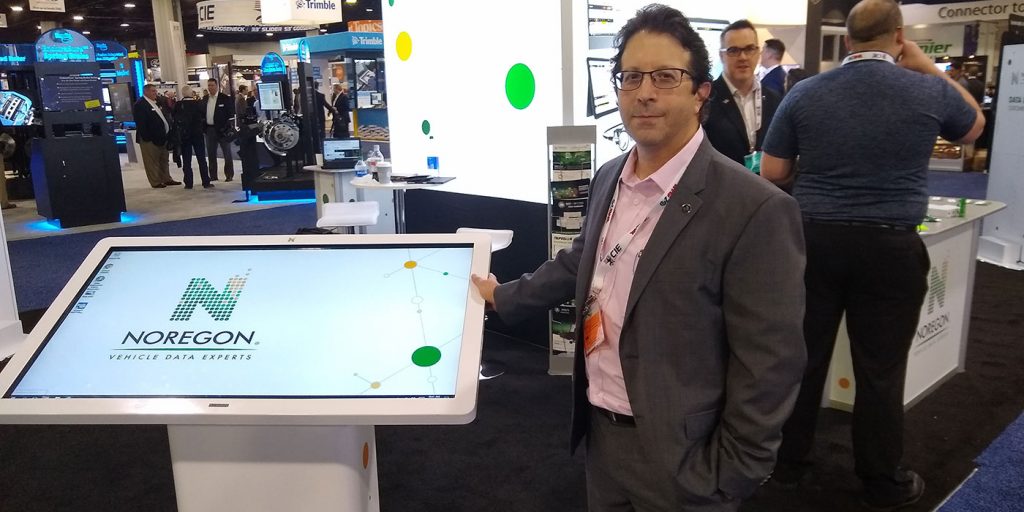“There’s something wrong with this truck.”
That’s the driver’s complaint, but the real problem is that there’s nothing wrong with the truck, according to the diagnostics. No fault codes, no dash lights, nothing. The driver can describe the symptoms, but now your tech has to hunt for the cause of the problem before she can start working on the solution.
“We found that technicians plug into to a truck and 30% of the time, there is no light and there is no fault code present,” said Dave Fabrizio, Noregon’s director of marketing.
Enter Noregon’s NextStep Repair, an interactive resource of step-by-step repair instructions and guidance for all engine makes and models. At the 2020 TMC Annual Meeting and Exhibition, Fabrizio took a moment to walk me through the inner workings of NextStep and shed a light on the challenges that technicians face in the bays, at a time in the industry where fleets at the show were complaining of up to 45 days of dwell time at service location.
Fleet Equipment (FE): So, NextStep Repair.
Fabrizio: Right, this is NextStep Repair. It’s mechanical type troubleshooting, giving technicians all the repairs they need to fix the vehicle for both fault-based and symptom-based troubleshooting.
Today, we’re focused on engine and aftertreatment service issues with NextStep Repair. One of the key ways to keep your aftertreatment problems in check is to fix and maintain your engine and aftertreatment as a whole, not as two different systems. NextStep Repair allows you to select which engine you’re working on, make and model, then you can filter by subsystems. You search for symptoms and then it’ll bring up all the details.
We’ve standardized the information across all makes and models so that technicians basically have the same information no matter what engine they’re troubleshooting. It’ll walk the tech through the removal, inspection, test and replacement/reassembly phases of the repair.
FE: So the truck hits the shop, there are no fault codes present, the driver has specific complaints, and…
Fabrizio: Yeah, the driver has engine performance complaints, you can match up the symptoms and start going down the list and then when you hit the one that matches what you’re looking for, bring up the information for what you need to do.
Think about a coolant problem. There won’t be an alert or fault code until that coolant gets below a certain level, but if you can see coolant level dropping before there is any kind of alert or you are constantly having to top off coolant, that’s where you can use NextStep Repair to troubleshoot that symptom and find the repair that will resolve that issue.
FE: Going back to the standardization of the information, how are you ensuring that it’s 100% accurate?
Fabrizio: We have ASE-certified technicians that review all of the content. They put all of it in the system. But if there are issues, maybe there’s a minor error, you can provide feedback, by clicking the icon and submitting your feedback as to what is they feel is not correct. The system tags that you were on this step and then we receive the feedback.
FE: How often do you get feedback and technicians interacting with it that way?
Fabrizio: Right now, we’re still in the test phase. The ones that are using the most right now are our own internal people who are testing it. From the beta test, we have seen a couple of things that have come in with feedback. It was a few minor things, but we were able to fix it and get it out there right away. With this being a web-based system, new components, repairs and symptoms will be added on an ongoing basis.
FE: So just engines right now, any plans to roll this out to other system troubleshooting?
Fabrizio: We’ll be adding transmissions, brakes and wheel ends and so forth throughout the rest of this year.














